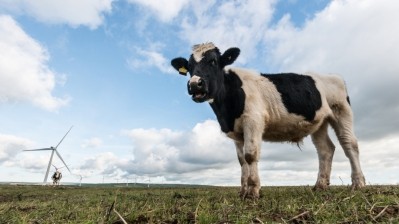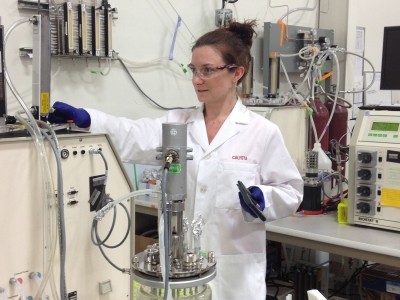Feed producers must prepare for the “great acceleration”

‘Eco-engineer’ Dr Marty Matlock, professor of biological and agricultural engineering at the University of Arkansas, spoke exclusively to FeedNavigator this week about the key trends in animal nutrition.
He said the idea that humans shouldn’t eat meat was a non-starter – “an ideological axiom that has no foundation in reality” as “humans love animal protein”.
The challenge and opportunity for the feed industry, therefore, is preparing for the “great acceleration” by increasing efficiency and reducing its impact on the biosphere, he said.
Dr Matlock is optimistic about the industry’s ability to rise to the challenge, saying “we have never had a better chance to do things right”.
Increasing efficiency
By and large, he said economies of scale are the most effective driver of mechanical efficiency.
“Large producers get the most available protein per input. Therefore intensification of scale offers a solution for emerging markets,” he said.
Another facet is physiological efficiency – improving animal genetics for healthier animals, higher quality meat and improved FCR (feed conversion ratio).
He said animal nutrition was a major part of that. “Producers need to have a better understanding of nutrition demands through the life-cycle of their animals. Too often they are fed the same when they are young as when they are maturing.”
He said the most sophisticated feed systems adapt to these changing nutrition demands and are attuned to the required balance of amino acids and micro-nutrients as well as the supplements necessary to enhance the animal’s use of primary nutrients.
Reducing impact
The main activities of meat production impacting on the environment are the production of feed and the distribution of waste, said Dr Matlock.
Taking the former, he said there was a need to improve management of watersheds, as one of the consequences of intensification is the production of too much nitrogen and phosphorus which ends up as waste in watersheds.
“To restore the balance, this has to go back to where the feed was produced. With animal production companies becoming more vertically integrated this becomes viable, but not where feed is shipped halfway across a continent,” said Dr Matlock.
“We have to start measuring the things that matter to us, such as water quality, and understanding the connection to food and feed production systems so we can manage them.”
Corporations to ring the changes
Dr Matlock believes that we have the technologies available to improve efficiency and reduce environmental impact, but that we don’t have the “economic viability or the political will to make this happen”.
Ultimately though, he predicts that the private sector will drive change and the commercialisation of enabling innovations.
“It’s about money. It will be driven by big corporations, not governments who are feckless and incapable of doing the simplest things. The best we can hope for from governments is to provide technical expertise to scientific communities,” he said.
Academic institutes need to step on it
What the industry needs is more innovation, which, according to Dr Matlock, the academic community is not really providing.
“Every aspect of this demands innovation. Where we are lagging behind is on applying knowledge to some challenges. The academic community is asleep on this issue; they haven’t engaged with it because there’s no money in it at the moment,” he said, adding that there are exceptions to this: Wageningen University, Wisconsin University, UC Davis and Arkansas University.
Despite a general lack of engagement from research institutes, Dr Matlock said he was excited about the pace of innovation in the fermentation and digestion of methane gas for power generation, and in the tracking of individual animal performance to evaluate genetic variability.
Elaborating on the latter, he said: “Even within the same herd of Holsteins there is variability that is hard to track without tracing each animal for traits. Historically this has been so expensive it has only been done academically, but now, with RFID tags, farmers can understand herd and animal performance and select the best performers for genetics.”









